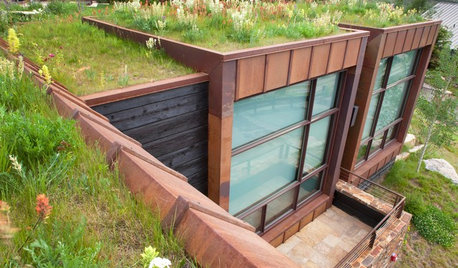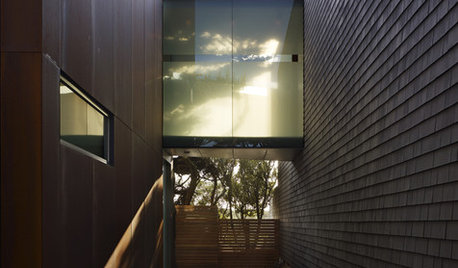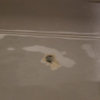leaky window mystery
dgmarie
16 years ago
Related Stories

LANDSCAPE DESIGNTo Make Your Garden Memorable, Add a Hint of Mystery
An element of mystique — intriguing gates, an interplay of light and shadow, hidden views — can take your garden to the next level
Full Story
CONTEMPORARY HOMESHouzz Tour: An Air of Mystery, Grounded in Practicality
Not all is revealed at once in this new New Zealand home, which balances cocktail chic and family playspace
Full Story
LANDSCAPE DESIGNGet the Mystery of a Gothic Garden for Yourself
Create an enchanting and tranquil scene with the stonework and wayward plantings of Gothic garden design
Full Story
CURB APPEALA New Stepped Entry Glows With Style
Rotting stairs and leaky windows lead to an inviting new facade that welcomes with light
Full Story
HOUZZ TOURSHouzz Tour: Modern and Traditional Tango in a Spanish-Style Ranch
From leaky and drab to revamped and fab, this Southern California home with its own orchard is more than ready for guests
Full Story
ARCHITECTUREHave Your Flat Roof and Your Snow Too
Laboring under the delusion that flat roofs are leaky, expensive and a pain to maintain? Find out the truth here
Full Story
GREEN BUILDING6 Green-Roof Myths, Busted
Leaky, costly, a pain to maintain ... nope, nope and nope. Get the truth about living roofs and see examples from simple to elaborate
Full Story
ARCHITECTUREDesign Workshop: The Many Highlights of Translucency
Evoke mystery, create interest, preserve privacy and more with translucent architectural elements inside and out
Full Story
WINDOW TREATMENTSThe Art of the Window: How to Embrace the Layered Look
Here are 12 ideas for using layered window treatments to add warmth, texture and style to your rooms
Full Story
GREAT HOME PROJECTSUpgrade Your Windows for Beauty, Comfort and Big Energy Savings
Bid drafts or stuffiness farewell and say hello to lower utility bills with new, energy-efficient windows
Full StoryMore Discussions









ron6519
dgmarieOriginal Author
Related Professionals
Hoffman Estates Kitchen & Bathroom Remodelers · North Chicago Kitchen & Bathroom Remodelers · Arlington General Contractors · Dunedin General Contractors · Lincoln General Contractors · Warren General Contractors · Woodland General Contractors · East Providence Painters · Madison Painters · Galveston Painters · La Quinta Painters · Panama City Beach Painters · Poinciana Painters · Roselle Painters · Taylor Painterssierraeast
theporchguy
dgmarieOriginal Author
theporchguy
dgmarieOriginal Author
lbpod
sierraeast
dgmarieOriginal Author
sierraeast
dgmarieOriginal Author
dgmarieOriginal Author
mightyanvil
dgmarieOriginal Author
mightyanvil
dgmarieOriginal Author
mightyanvil
mightyanvil
sierraeast
dgmarieOriginal Author